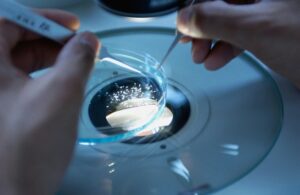
LA JOLLA (August 19, 2025)—In a groundbreaking development, scientists at the Salk Institute have unveiled the first comprehensive genetic atlas of the Arabidopsis thaliana life cycle. This small, flowering weed, often overlooked by the general public, has been a cornerstone of plant biology research for decades. The new atlas, published in Nature Plants, captures the gene expression patterns of 400,000 cells across various developmental stages, providing an unprecedented view into the plant’s life from seed to maturity.
The announcement marks a significant advancement in plant biotechnology, agriculture, and environmental sciences. By utilizing cutting-edge single-cell and spatial transcriptomics, researchers have created a publicly available resource that promises to inform future studies on plant cell types and their responses to environmental stimuli.
Arabidopsis: The Unsung Hero of Plant Biology
Arabidopsis thaliana, or thale cress, may not be a household name, but it has been instrumental in unlocking the mysteries of plant biology. As a model organism, it has helped scientists understand how plants respond to light, the hormonal control of plant behavior, and the development of root systems. Despite its pivotal role, many aspects of its life cycle remained elusive until now.
According to Joseph Ecker, senior author and Salk International Council Chair in Genetics, “We’ve come very far in our understanding of plant biology, but until recently, there has been a technological bottleneck preventing us from comprehensively cataloguing cell types and the genes they express uniformly, across developmental stages.”
Innovative Mapping Techniques
For years, scientists have been piecing together the genetic puzzle of Arabidopsis through genome mapping. This involves identifying which genes are expressed in different cell types across the plant’s tissues and organs. One of the most effective tools in this endeavor is single-cell RNA sequencing, which examines RNA strands to determine active genes in a cell.
However, previous maps were often limited to specific organs or tissues. To overcome this, Salk researchers combined single-cell RNA sequencing with spatial transcriptomics. This approach allows for the creation of genomic maps that maintain the structural integrity of tissues, providing a holistic view of gene activity across the plant.
“What excites me most about this work is that we can now see things we simply couldn’t see before,” says Natanella Illouz-Eliaz, a postdoctoral researcher involved in the study. “Imagine being able to watch where up to a thousand genes are active all at once, in the real tissue and cell context of the plant.”
Implications for Plant Science
The new atlas spans 10 developmental stages of Arabidopsis, capturing a dynamic array of cell types and gene expressions. This comprehensive view has already led to the discovery of previously unknown genes involved in seedpod development, among other insights.
Travis Lee, co-first author and postdoctoral researcher, emphasizes the atlas’s potential: “This study will be a powerful tool for hypothesis generation across the entire plant biology field. Our easy-to-use web application makes this life cycle atlas easily accessible to the plant science community.”
The resource is expected to facilitate deeper exploration of plant cell development and responses to genetic and environmental changes, advancing the field of plant biology.
Looking Ahead
The release of this genetic atlas is a significant milestone in plant research, with implications extending beyond Arabidopsis. It sets the stage for a new era of plant science, where researchers can explore the complexities of plant life with unprecedented clarity and detail.
Other contributors to this groundbreaking work include Jiaying Xu, Bruce Jow, and Joseph Nery of Salk, as well as Tatsuya Nobori, formerly of Salk and now at The Sainsbury Laboratory in the UK. The project received support from several prestigious institutions, including the Human Frontiers Science Program and the Howard Hughes Medical Institute.
The Salk Institute, renowned for its pioneering research across various scientific domains, continues to push the boundaries of knowledge. Founded by Jonas Salk, the developer of the first safe and effective polio vaccine, the Institute remains dedicated to unlocking the secrets of life itself.







